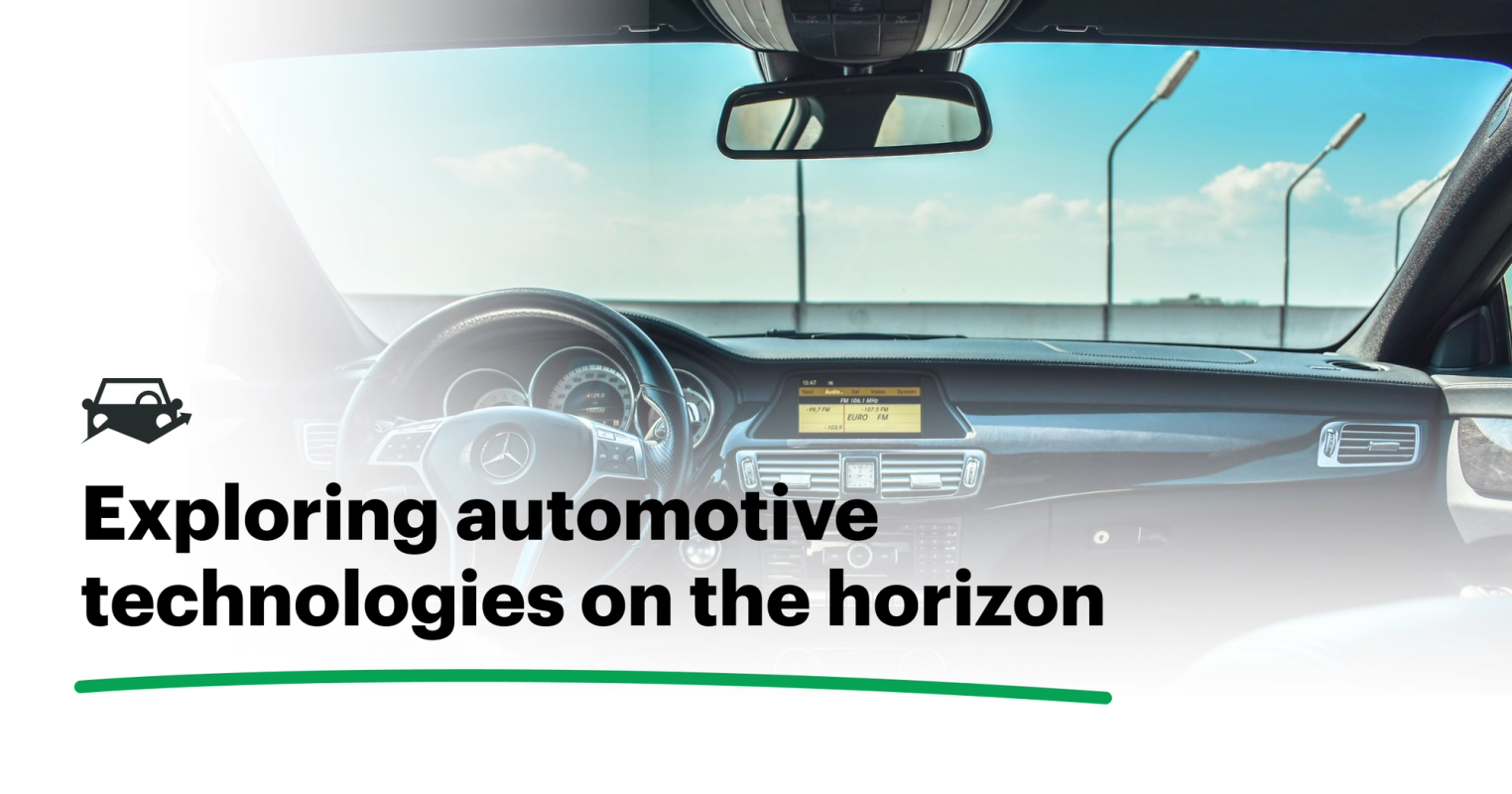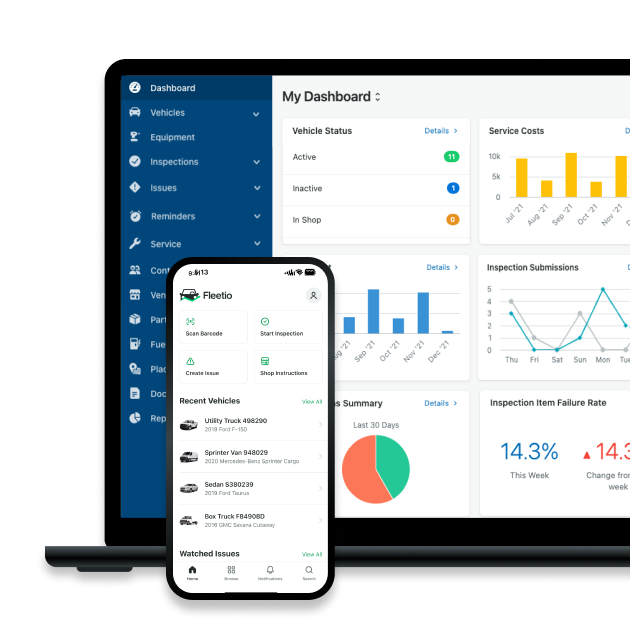How Fleets can Take Advantage of Incoming Automotive Technologies
As automotive technologies continue to evolve and expand, fleet owners and operators have a unique opportunity to leverage emerging technologies to enhance safety and efficiency and optimize their operations to stay ahead in a rapidly changing industry.
Jul 21, 2023
5 min read

How has Technology Changed the Automotive Industry
In fleet management, where innovation is a key to success, staying informed about new and incoming automotive technologies is not just an option — it’s a necessity. Technological advances require fleet managers to be at the forefront of industry trends, armed with knowledge that can shape the future of their operations in order to stay competitive and maintain business profitability.
If you look at any predicted fleet trends, you’ll recognize two things: that there are broad-reaching problems and that technology is being positioned as a solution. This isn’t to say automated vehicles (AVs) are going to replace your drivers. Honestly, we’re years from that actually being a viable thing, which some people still see as an end-all, be-all solution. It’s to say that fleet managers who keep themselves updated about new automotive technologies are better equipped to optimize operational efficiency, safety and productivity, either by using these tools, or expressing skepticism of them within their own operation. So, what are some of the less promoted technologies on the horizon which fleet managers should look for? I’m glad you asked!
Augmented Reality Auto-Dimming Windshield
General Motors has filed a patent application for an augmented reality (AR) auto-dimming windshield that aims to protect drivers from the glare of oncoming headlights (and hopefully sun glare, too). This technology utilizes an AR heads-up display, sensors to detect light levels and smart glass that can be electrically tuned to control the amount of light transmitted through the windshield.
With this system, fleet vehicles can enhance driver safety by automatically dimming specific sections of the windshield when sensors detect excessive light. It also generates an image of the offending vehicle on the windshield, enabling drivers to identify the source of the glare accurately. This technology proves particularly useful in mitigating the risk of accidents and liability caused by high beams from other vehicles.
External Microphone for Verbal Interaction and Situational Awareness
The HARMAN External Microphone offers fleet operators a game-changing acoustic sensor for improved verbal interaction and situational awareness. It facilitates enhanced acoustic detection and increased awareness of approaching vehicles, providing an enhanced experience for both drivers and passengers.
In short: by integrating the external microphone into fleet vehicles, operators can align with customer expectations of convenience and exterior sound detection. With its robust design and seamless vehicle integration capabilities, this solution empowers fleet managers to deliver advanced communication systems and enhance safety-focused use cases like emergency vehicle detection.
Driver Monitoring System for Enhanced Safety
I know, I know. Drivers often feel a sense of invasiveness when it comes to telematics and cameras, but adults are mostly logical, and if you can explain that monitoring driver behavior can save thousands on even an injury-less fender bender then it may be worth the hassle. Magna’s Driver Monitoring System integrates advanced camera technology within the interior mirror, offering an unobstructed view of the driver. This system provides occupant monitoring features such as seat belt detection and even video conferencing and facial recognition capabilities.
The Driver Monitoring System offers a comprehensive approach to driver safety by actively detecting and reacting to distracted driving behaviors while accommodating normal actions like checking blind spots. Fleet managers can leverage this technology to enhance the safety and comfort of their drivers, leading to a reduction in accidents and improved overall operational efficiency.
Hydrogen Combustion Engine as an Alternative to EVs
I may or may not be biased in the futuristic technology war, but hydrogen combustion engines, which promise a cleaner, more sustainable future, may offer fleet operators a host of benefits. At its core, a hydrogen combustion engine is an internal combustion engine that utilizes hydrogen gas as its primary fuel source instead of conventional gasoline or diesel. Unlike traditional engines that rely on fossil fuels, hydrogen combustion engines produce zero greenhouse gas emissions.
Hydrogen combustion engines function in a similar manner to their gasoline counterparts. Compressed hydrogen is introduced into the engine’s combustion chamber, where it combines with oxygen from the air intake. This reaction creates a controlled explosion, driving the pistons and generating mechanical power to propel the vehicle forward. The resulting byproduct of this combustion process? Pure water vapor. With no harmful emissions or pollutants, hydrogen combustion engines present an exciting alternative for fleets aiming to reduce their carbon footprint and comply with stringent environmental regulations.
Hydrogen as a fuel source offers several practical advantages. Hydrogen combustion engines provide high torque output, enabling robust performance and acceleration. Fleet vehicles powered by hydrogen engines can maintain excellent power delivery, making them suitable for a wide range of applications, including heavy-duty transportation and long-haul logistics.
Moreover, the hydrogen refueling infrastructure is expanding globally, making it increasingly viable for fleets to adopt this technology. With more hydrogen refueling stations being established, fleets can plan their routes with confidence, ensuring a reliable and convenient refueling network for their hydrogen-powered vehicles. Toyota's efforts in hydrogen power have shown promising results, challenging the notion that EVs are the only path to sustainable transportation.
Build a better budget for fleet improvements with Fleetio!
Start free trialTechnology is Your Friend
As automotive technologies continue to evolve, and fleet data becomes more critical in both daily and long-term operational goals, fleets have an opportunity to embrace these innovations to enhance their operations. By staying informed and adopting these advancements as needed, fleet managers can ensure they are at the forefront of the industry, providing exceptional service and staying ahead of the competition.
Fleet management technology, like fleet management software (FMS), provides a wealth of data that fleet operators can leverage to make informed decisions about future technology investments. By analyzing the data gathered through the software, fleet managers can gain valuable insights into their fleet’s performance, operational costs and areas for improvement. This data-driven approach allows them to identify patterns, trends and potential opportunities for incorporating new technologies that offer the best return on investment (ROI).
Want to find out which fleet technologies might have the best ROI for your fleet? Start your free Fleetio trial or schedule a demo today!

Senior Fleet Content Specialist
As a Senior Fleet Content Specialist at Fleetio, Rachael Plant uses her near decade of industry experience to craft practical content aimed at helping fleet professionals tackle everyday challenges with confidence.
LinkedIn|View articles by Rachael PlantReady to get started?
Join thousands of satisfied customers using Fleetio
Questions? Call us at 1-800-975-5304
